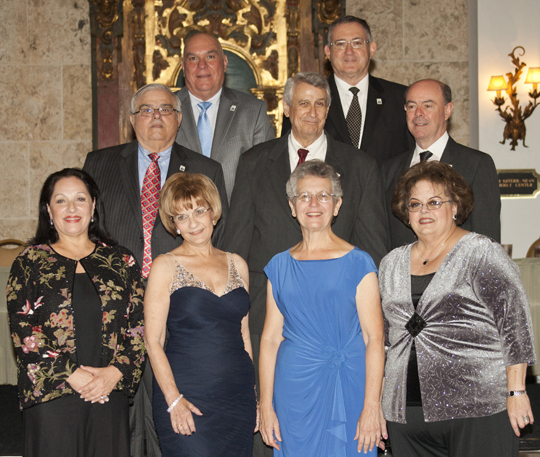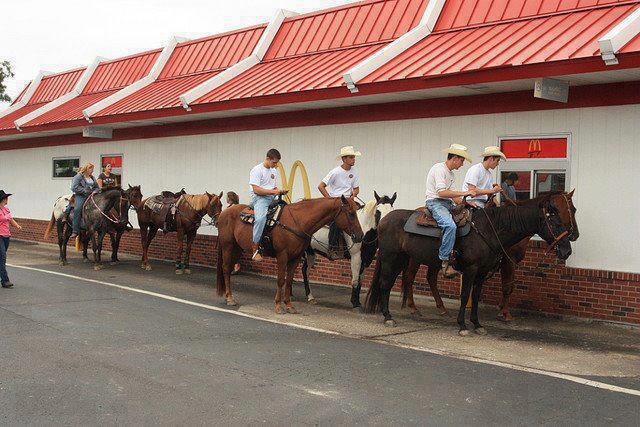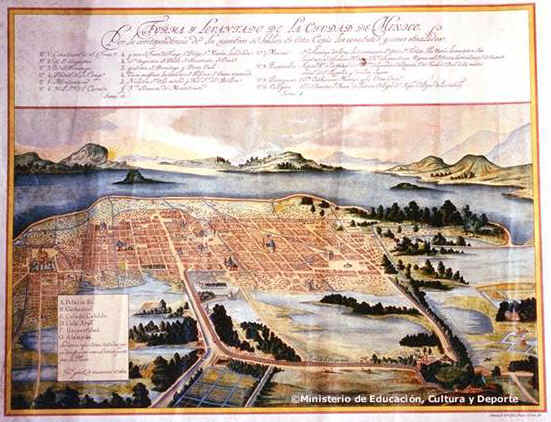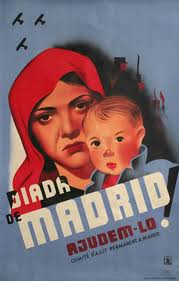 A Partido conference and convention are held in San Jose
and Los Angeles
A Partido conference and convention are held in San Jose
and Los Angeles
On April 8-9th of 1972, a statewide Partido conference was held in San
Jose that had been organized by the chapters of the Northern
California Steering Committee and coordinated by Vicente Gonzalez from
the Newark chapter. Workshops on issues such as immigration,
education, organizing methods and a clear criteria for becoming a
valid LRUP chapter were discussed and voted upon at this event.
Delegates at this conference also voted and reaffirmed the principle
that Raza Unida members could not belong to other political parties
and vice versa.
Dr. Carlos Munoz provided leadership
in a
workshop discussion at the LRUP convention in East L.A.
This was in response to repeated instances where members from other political parties and organizations had posed as representatives of the Partido in order to use it for their own benefit. This San Jose conference was followed up by the second California La Raza Unida Convention which was held on July 1-2, 1972 at at East Los Angeles College. Close to 500 people attended as elected chapter delegates from all over the state came together to reinforce the Partido’s political and organizational unity and coordinate the work statewide. This was in preparation for the national convention that was to be held in El Paso in September of 1972. In addition, efforts were made at this convention to strengthen the Partido’s organizational structure in order to prevent other groups from continuing to disrupt the work of LRUP and using its name for their own narrow interests. The chairperson of the Organization Workshop was Antonio Abarca from the Hayward-Union City chapter. He presented a workshop resolution to the body which was voted on and adopted that reaffirmed the LRUP criteria which clearly determined the requirements for becoming a valid and active chapter.
There was a vibrant discussion during the convention
and a unamimous vote to support and maintain the Partido’s political
independence from the Democrats and Republicans. Both parties in
California, but especially the Democrats, had created numerous
political roadblocks and pressure on the LRUP in order to prevent
party candidates from being placed on the ballot. A healthy debate
also took place on the issue of immigration and a draft position was
eventually submitted to the elected Executive Committee of the
convention for further discussion and ratification. One negative and
unfortunate aspect of this convention was an unprincipled attempt by
members of the then MAPA chapters from San Bernardino and Riverside
counties who were affiliated with the Democratic party to fraudulently
register as Partido chapters and vote as delegates. Led by a professor
from that area, this small group of individuals had created a number
of phony and unknown LRUP chapters in their counties just prior to the
convention in an attempt to vote and take control of the state Partido.
These bogus chapters didn’t meet the state Partido’s criteria of
actually having real members, a chapter office and had been using
non-existent mailing addresses. This was verified in a report
presented by David Rivera who was the elected secretary of the
Southern California Central Committee.
After a heated discussion by
the officially-elected convention delegates, the overwhelming majority
of the state’s chapters voted to reject these pro-Democrat MAPA
members and their non-existent chapters as voting delegates. They
ultimately resorted to yelling and disrupting the proceedings and
another vote was taken by the convention delegates to expel them.
Adding to this divisive and shameful behavior by these Mapa members
was their unprincipled red-baiting of Casa and Bert Corona. In
addition, a vote was also taken to ask a Trotskyite group, the Social
Workers Party to leave. They had repeatedly been notified verbally and
in written form by LRUP representatives to not represent the Partido
and use its name together with that of their party. These SWP members
refused to accept this position of the state Partido and continued to
violate the convention’s rules by insisting on selling their
newspapers during the workshops which effectively disrupted the
proceedings.
The hundreds of elected LRUP delegates from chapters throughout the state had united in a unanimous and democratic vote to repel the joint efforts of these unprincipled Mapa and SWP elements to use LRUP for their own personal gain and subvert the organizing work of the convention. An even more united state Partido emerged from this convention as it had fought off the wrecking activities of these outside provocateurs and strengthened its political and organizational unity. In an interview with the L.A. Times at the close of the convention, Partido representative Reggie Ruiz from the East L.A. Chapter stated that, “the final LRUP platform had been formulated by close to 500 delegates who participated in the convention”, and “its (the platform) final form was hammered out by 32 elected delegates in an executive session on Sunday”. L.A. Times, July, 1972). As the members of the state’s chapters departed for home, this strengthened sense of unity would motivate them to continue their community organizing in preparation for the much anticipated national convention that was to be held in El Paso. Gilberto Blanco of the East L.A. chapter stated in an interview held with La Raza Magazine shortly after the convention that, “There was an opportunity for everyone to participate. People bent over backwards to be fair. We realized the importance of state unity.”
 A strong political momentum leads to the first national
LRUP convention
A strong political momentum leads to the first national
LRUP convention
The Partido’s national convention drew members and other interested
individuals from numerous states and those in attendance totaled close
to 3000 persons. This convention was held within the historical
context of President Richard Nixon waging his Counter Intelligence
Programs to undermine minority organizations while unleashing a
violent carpet bombing of Vietnam as the death toll from the war rose
even higher. An unfortunate and tragic loss occurred before the
convention as Colorado LRUP organizer Ricardo Falcon was killed on the
way to to El Paso by a racist gas station owner. As the convention
convened, the expectations of those in attendance were high
and people were in an enthusiastic mood as they sensed that
politically our time had finally arrived. The political momentum for
the Chicano Movement was cresting with the possibility of a united
national movement and political consensus under the leadership of an
independent Chicano party. Leaders such as Reies Tjerina, Jose Angel
Gutierrez and Rodolpho Corky Gonzalez appeared together at the podium
and embraced in a show of unity. However, this was a fragile unity and
existed merely on the surface as competing strategies would soon
divide them and those in attendance.
It soon became apparent that two
opposing political tendencies were emerging at the convention that
posed two different directions for the Raza Unida party. Jose Angel
Gutierrez and Corky Gonzalez were candidates for the post of National
Chairperson of the Partido and each presented a different strategic
position as to the type of party LRUP would become and in which
direction it would proceed. Corky presented his position on the
two-party system by using the analogy about “the two-headed monster
that eats out of the same trough” and reaffirmed that the stance of
the Partido should be that of mass Chicano Party that does not
collaborate nor endorse any of the two major parties. This position
was principally supported by the Colorado delegation led by the
Crusade for Justice and supported by other states such as California.
The counter position was presented by Jose Angel Gutierrez who was the
head of the Texas Partido. He stated that, “We will be the balance
of power in the 1972 presidential elections” and he proposed that
the national Raza Unida Party “endorse the presidential candidate
that endorses our people and our program for action”. In essence, to
leverage the best
and people were in an enthusiastic mood as they sensed that
politically our time had finally arrived. The political momentum for
the Chicano Movement was cresting with the possibility of a united
national movement and political consensus under the leadership of an
independent Chicano party. Leaders such as Reies Tjerina, Jose Angel
Gutierrez and Rodolpho Corky Gonzalez appeared together at the podium
and embraced in a show of unity. However, this was a fragile unity and
existed merely on the surface as competing strategies would soon
divide them and those in attendance. It soon became apparent that two
opposing political tendencies were emerging at the convention that
posed two different directions for the Raza Unida party. Jose Angel
Gutierrez and Corky Gonzalez were candidates for the post of National
Chairperson of the Partido and each presented a different strategic
position as to the type of party LRUP would become and in which
direction it would proceed. Corky presented his position on the
two-party system by using the analogy about “the two-headed monster
that eats out of the same trough” and reaffirmed that the stance of
the Partido
 should be that of mass Chicano Party that does not
collaborate nor endorse any of the two major parties. This position
was principally supported by the Colorado delegation led by the
Crusade for Justice and supported by other states such as California.
The counter position was presented by Jose Angel Gutierrez who was the
head of the Texas Partido. He stated that, “We will be the balance
of power in the 1972 presidential elections” and he proposed that
the national Raza Unida Party “endorse the presidential candidate
that endorses our people and our program for action”.
should be that of mass Chicano Party that does not
collaborate nor endorse any of the two major parties. This position
was principally supported by the Colorado delegation led by the
Crusade for Justice and supported by other states such as California.
The counter position was presented by Jose Angel Gutierrez who was the
head of the Texas Partido. He stated that, “We will be the balance
of power in the 1972 presidential elections” and he proposed that
the national Raza Unida Party “endorse the presidential candidate
that endorses our people and our program for action”.
J. A. Gutierrez, Reis Tijerina and R.
Corky Gonzalez in a display of unity: two opposing strategies for the
LRUP soon divided the convention, photo: Oscar Castillo
Another issue that was brought up was the Farah strike that was occurring in El Paso where over 4,000 mostly female garment workers had walked out to protest their substandard working conditions. There was an active national boycott of Farah garments in effect and the California Partido had been active in boycotting Farah and supporting the fight for union recognition by these workers. Unfortunately, the new Chairperson declared the strike to be “an outside activity” and not pertinent to the proceedings. By the end of the convention, delegates had been polarized as strong feelings filled the air with some people jubilant at having their candidate triumph while others departed for home in anger and frustration. The discouraged California delegation departed with a unified determination to preserve the state Partido’s political independence from the two dominant political parties. Soon after, a National Congreso de Aztlan was created along with newly-elected officers and was directed by the National Chairperson Jose Angel Gutierrez. However, the Congreso was supposed to meet twice a year in Albuquerque but only met once in November of 1972 as conflicts quickly arose between Gutierrez and the positions taken by the other Congreso officers. The following summer, La Raza Unida Party of Colorado held a Congreso de Aztlan Junta on August 16-19 of 1973 in Denver. The resolutions adopted at this conference declared the Partido to be a revolutionary Chicano Party which was quite different from the LRUP that emerged out of the El Paso convention. The California Partido which did not attend this Denver Junta, sent a letter to the Colorado Partido which stated that, “The announced meeting in Denver, August 17,18,19, cannot be recognized within the existing established procedure for La Raza Unida National Congreso meetings” and “we ask other states to join us in instructing La Raza Unida National Congreso to meet no later than Thanksgiving weekend in Albuquerque”. No other National Congreso meetings were ever held and the majority of the state Partido organizations continued to carry out their work independently without any national direction or cohesion. The momentum and prospect of a unified Chicano National Movement and mass political party at its head had been left in shatters.
A wounded Partido continued organizing and paved the way for progress
La Raza Unida members in Oakland organize
a demonstration in the community
The numerous state meetings, conferences and conventions that were
held from 1971-1972 had allowed the members of the California Partido
to develop and strengthen their organization and state platform which
upheld the principles of organizing to achieve community control, to
maintain the independence of LRUP from the Democrats and Republicans,
and the long-range objective of self-determination. These principles
and ideological stance were still firmly defended by the California
state LRUP after the 1972 national convention that left the national
Partido wounded, deeply divided and leaderless over which political
direction to proceed in. The organizational structure of the
California Partido during 1972-73 continued to function efficiently
and democratically with an elected Northern Califonia Steering
Committee and a Southern California Central Committee. State
representatives from these regional groups met regularly and made
decisions pertaining to the state Partido in a democratic and
collective manner. The continuing political work that was carried out
by LRUP members in many cities and small towns dealt with local issues
such as inferior education, discrimination, a lack of jobs and
political
representation. Other issues that were taken up by the Partido were
the campaigns to elect to political office community leader and
activist Dr Jose Hernandez of the San Fernando chapter and Tito Lucero
in Union City, to free Ricardo Chavez Ortiz, the statewide boycott
committees in support of the Farah workers in Texas, and the strike by
the furniture workers of Local 500 in Los Angeles. This strike was
organized and led by the Congreso Obrero which was affiliated with the
Partido and given strong leadership by former Brown Beret and LRUP
member Cruz Olmeda. Female leadership in the Partido was key as
individuals such as Patricia Borjon, Jennie Estrada and Margie Sanchez
played a pivotal role in the organizing efforts as did the
predominantly female leadership in the San Jose chapter. Many of these
statewide organizing efforts were carried out in an organized and
newly assertive manner that were to pave the way for future progress.
On the negative side, the Partido consistently tried to get involved
in electoral politics and carried out numerous campaigns to register
voters. However, the LRUP was never able to get on the official state
ballot in order to run candidates statewide due to the large amount of
signatures required by regulations. Even if the Partido had been able
to get on the state ballot, there were never enough LRUP candidates to
run for office and all of this unfortunately ended up becoming a
discouraging catch-22 situation for the membership. In addition,
Hispanic members of the Democratic Party continued their campaign to
subvert the Partido’s organizing efforts. During these years, two
distinct and simultaneous tactics for organizing were utilized and
eventually became contradictory to one another. One consisted of
organizing around grassroots issues to build a community base, while
the other focused on continually registering voters and attempting to
participate in electoral politics. One of these had to become the
dominant form of organizing, otherwise, the hard work and energy of
Partido members became splintered with neither tactic carried out
successfully. Unfortunately, there were not enough LRUP members in the
state chapters to simultaneously engage in both of these types of
political activities in a qualitative and effective way. Some chapters
proposed that the work involving electoral politics be dropped and
that the organizing should primarily focus on community issues and the
building of a political base. Meanwhile, others disagreed and
continued the huge task of attempting to register voters for the
Partido. With the passage of 1973-74, the earlier enthusiasm possessed
by members began to decline due to fatigue and a lack of any concrete
electoral victories. The expected support and endorsements from the
United Farm Workers under Cesar Chavez and mainstream Latino civil
rights organizations never materialized as all of these groups were
pressured to stay loyal to the Democrats due to political and
financial ties that existed between them. With the passage of time,
many students who had been working with LRUP began to leave and move
on which resulted in the growth of an unstable base of membership. In
addition, many people who had registered to vote as Partido members
eventually had their registrations eliminated as they had no
candidates to vote for. A period of growing pessimism and disaffection
among many members began to set in and a further decline  in activist
momentum continued into the mid-1970′s. BY 1975, the number of
chapters in Southern California had decreased from about fifteen to
four. Some chapters left in order to focus only on community work
while others slowly dissipated as people went in different directions.
Eventually,
a second Raza Unida convention was held in 1980 and a new and
reconstituted party became the Partido Nacional La Raza Unida. This
present Partido carries out community work in New Mexico, Arizona,
California and other states, but does not focus on electoral politics.
It is based upon the ideology of revolutionary nationalism and
upholding the principle of self-determination.
in activist
momentum continued into the mid-1970′s. BY 1975, the number of
chapters in Southern California had decreased from about fifteen to
four. Some chapters left in order to focus only on community work
while others slowly dissipated as people went in different directions.
Eventually,
a second Raza Unida convention was held in 1980 and a new and
reconstituted party became the Partido Nacional La Raza Unida. This
present Partido carries out community work in New Mexico, Arizona,
California and other states, but does not focus on electoral politics.
It is based upon the ideology of revolutionary nationalism and
upholding the principle of self-determination.
Learn from the experiences of the past to assist the
present struggle
During the period of 1968 to 1972, Chicano activists in California had
utilized different and creative tactics in order to make needed
changes in their communities. School boycotts and walkouts were
organized to improve the level of education and this was met by the
use of criminal indictments in Los Angeles. Supposedly legal Chicano
Moratorium marches against the war and for social justice were
attempted in a peaceful manner and were met with police violence and
the killing of innocent people. Finally, the strategy of independently
participating in electoral politics was tried, but was obstructed by
rigid voter and party registration rules that had been created by the
two dominant parties whose verbal attacks against the Partido also
obstructed the work and progress of this fledgling organization. In
the six short years from 1968 to 1974, Chicano movement activists had
utilized various types of tactics to fight for their rights and
achieve social justice, and all were rebuffed by the Democratic and
Republican  political establishment and the thuggery of their police.
Yet, people did not give up and
courageously kept on organizing and struggling for change. Presently,
most of the people who were once Partido members in California have
now moved on into the middle class and in most likelihood have
gravitated back to the Democratic party and the once reviled system of
the two-headed monster. Despite this, many remain active and still try
and make a difference within their professions and communities. The
previous organizing efforts by these Partido members combined with
their strong belief in social justice for Chicanos have given the
younger generation a strong example to build upon. All of these
numerous organizing tactics that were developed and used from 1968 to
1972 are theoretical lessons from the Chicano Movement that need to be
applied in a
political establishment and the thuggery of their police.
Yet, people did not give up and
courageously kept on organizing and struggling for change. Presently,
most of the people who were once Partido members in California have
now moved on into the middle class and in most likelihood have
gravitated back to the Democratic party and the once reviled system of
the two-headed monster. Despite this, many remain active and still try
and make a difference within their professions and communities. The
previous organizing efforts by these Partido members combined with
their strong belief in social justice for Chicanos have given the
younger generation a strong example to build upon. All of these
numerous organizing tactics that were developed and used from 1968 to
1972 are theoretical lessons from the Chicano Movement that need to be
applied in a
creative way to today’s conditions and struggles. Northern
Calif., LRUP chapters organized events. Poster by Rich Favela.
One step back, two steps forward: we need to forge ahead in
a new direction
Viewing the present situation in California, there are now many
elected Mexican-American politicians in Sacramento who participate in
the same compromised system that was never fundamentally changed and
which has even more lobbyists and corporate control than ever. Some of
these Mexican-American politicians speak up and take a principled
stand on issues pertinent  to Chicanos while the majority listen
primarily to the lobbyists and campaign donors who swarm around
Sacramento and local government offices. Many raza-majority towns in
Southern California such as Cudahy, Bell, South Gate and others have
been governed recently by “Hispanic” politicians whose corrupt
behavior and theft from their own communities has been worse than that
of their white predecessors. Simply exchanging brown wolves for white
ones without fundamentally changing the corrupted structure of the hen
house does not solve the problem. Meanwhile, in the growing
working-class barrios throughout the state, the problems of inferior
education, serious unemployment, gangs, police abuse and immigration
issues continue to worsen for raza. Despite these problems, and the
lack of success in achieving the objectives of the original California
La Raza Unida
to Chicanos while the majority listen
primarily to the lobbyists and campaign donors who swarm around
Sacramento and local government offices. Many raza-majority towns in
Southern California such as Cudahy, Bell, South Gate and others have
been governed recently by “Hispanic” politicians whose corrupt
behavior and theft from their own communities has been worse than that
of their white predecessors. Simply exchanging brown wolves for white
ones without fundamentally changing the corrupted structure of the hen
house does not solve the problem. Meanwhile, in the growing
working-class barrios throughout the state, the problems of inferior
education, serious unemployment, gangs, police abuse and immigration
issues continue to worsen for raza. Despite these problems, and the
lack of success in achieving the objectives of the original California
La Raza Unida
 *
*
An in-depth work on the politics of the
California LRUP titled: “Chicano Politics: La Raza Unida”
and other works were written by Richard Santillan:
Chicano Studies professor and former member of the Partido’s East
L.A. chapter
Colorado organizer and activist Ricardo Falcon: presente!
In memory of ex-Mechistas and Labor Committee organizers from the Partido: Danny Estrada, Rolando Menjivar, David Rivera and “El Poeta” Moreti.


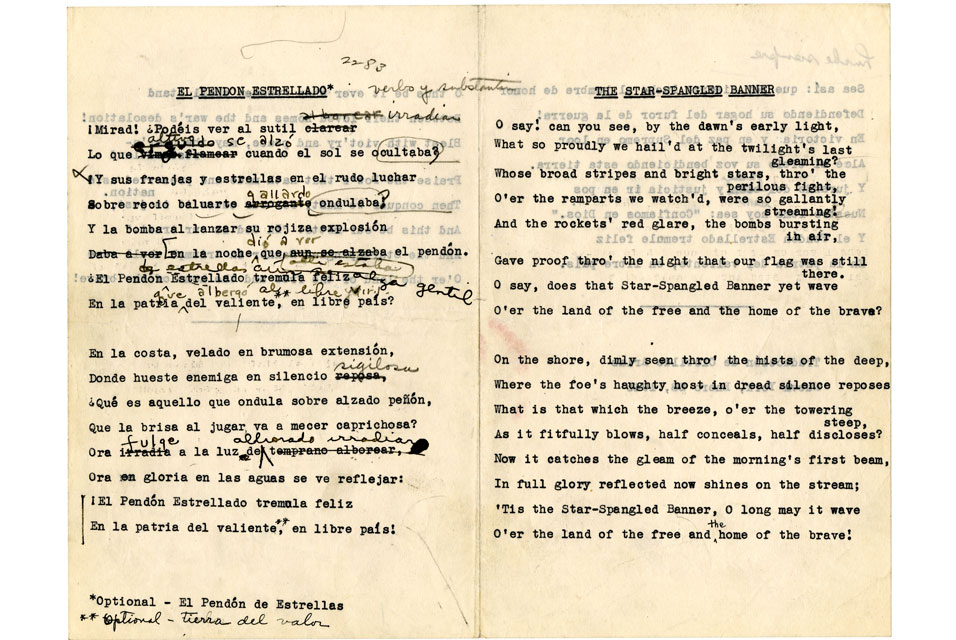
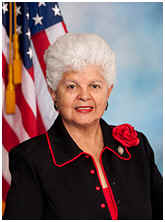
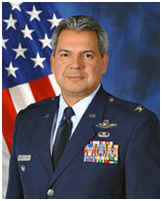
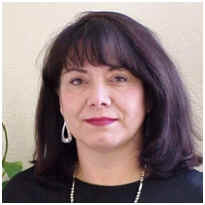

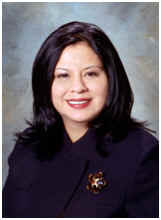
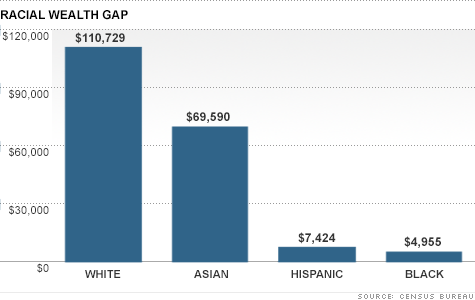 The Center for Responsible Lending estimates that
Black Americans will lose a combined $194 billion in wealth from 2009
through 2012 because of the mortgage meltdown. Additionally, the
Center for Economic and Policy Research estimates that Black Americans
will have lost another $142 billion in potential wages and salaries from
2008 through 2012.
The Center for Responsible Lending estimates that
Black Americans will lose a combined $194 billion in wealth from 2009
through 2012 because of the mortgage meltdown. Additionally, the
Center for Economic and Policy Research estimates that Black Americans
will have lost another $142 billion in potential wages and salaries from
2008 through 2012. 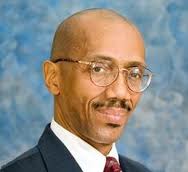

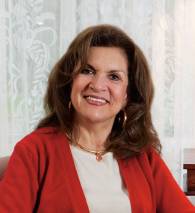

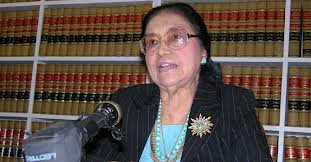
 SAN DIEGO, CA (17 de
octubre, 2012) -
SAN DIEGO, CA (17 de
octubre, 2012) -

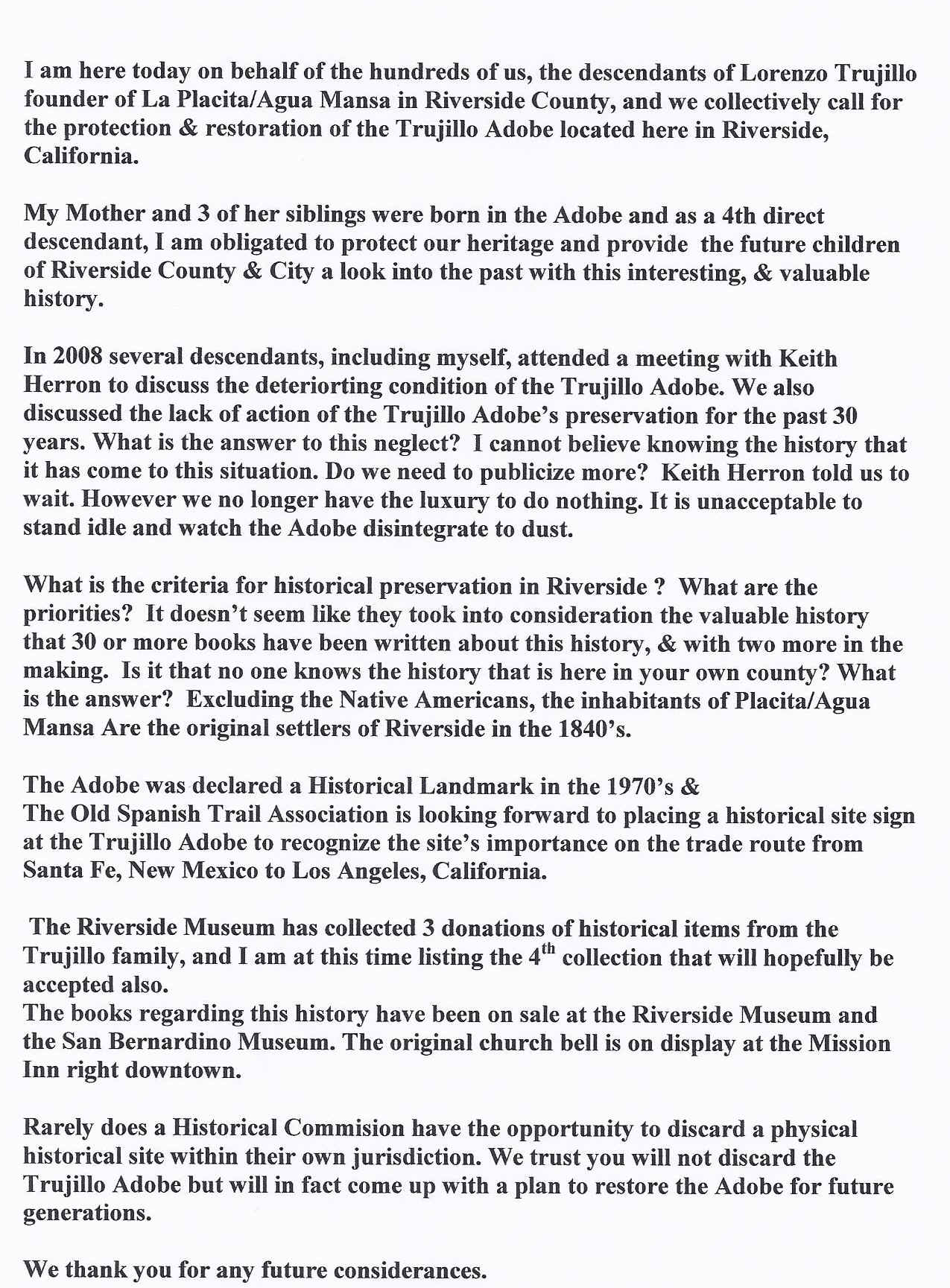










 During my shift in the Emergency Room last night, I had the pleasure of evaluating a patient whose smile revealed an expensive shiny gold tooth, whose body was adorned with a wide assortment of elaborate and costly tattoos, who wore a very expensive brand of tennis shoes and who chatted on a new cellular telephone equipped with a popular R&B ring tone. While glancing over her patient chart, I happened to notice that her payer status was listed as "Medicaid"! During my examination of her, the patient informed me that she smokes more than one costly pack of cigarettes every day and somehow still has money to buy pretzels and beer.
During my shift in the Emergency Room last night, I had the pleasure of evaluating a patient whose smile revealed an expensive shiny gold tooth, whose body was adorned with a wide assortment of elaborate and costly tattoos, who wore a very expensive brand of tennis shoes and who chatted on a new cellular telephone equipped with a popular R&B ring tone. While glancing over her patient chart, I happened to notice that her payer status was listed as "Medicaid"! During my examination of her, the patient informed me that she smokes more than one costly pack of cigarettes every day and somehow still has money to buy pretzels and beer. 

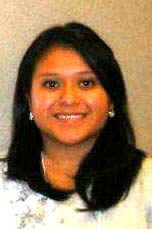
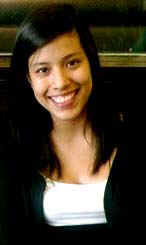
 M
M
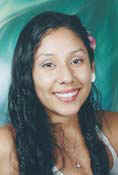
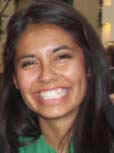 M
M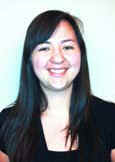
 M
M

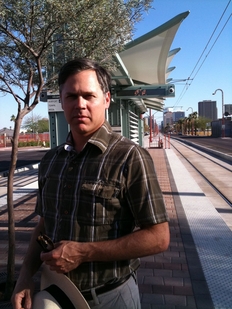
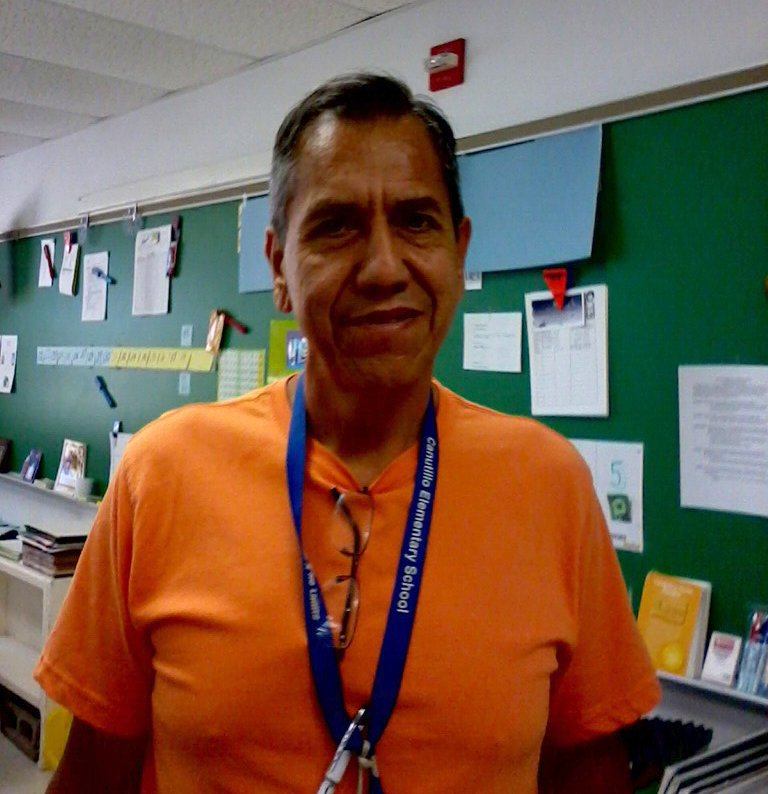

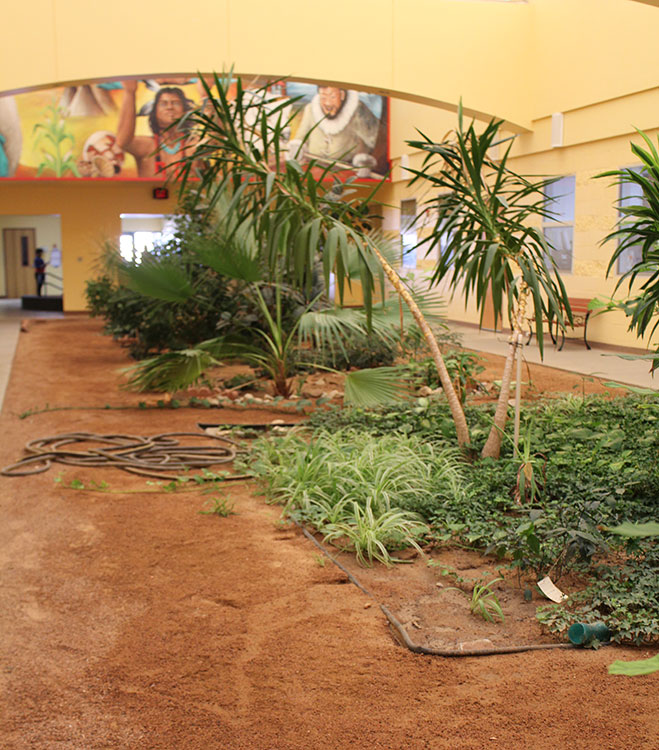
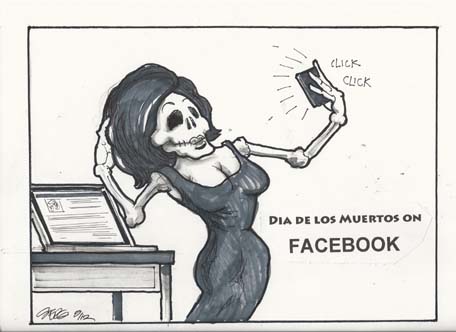 Thank you Sergio Hernandez
Thank you Sergio Hernandez
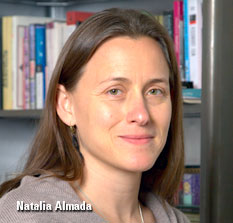 Among the 23 recipients of this year’s
prestigious MacArthur fellowships are Natalia Almada, 37, a
documentary filmmaker, who resides in Mexico City. Almada, a dual citizen of the United States
and Mexico, is known for her insightful, innovative and
imaginative work on Mexican history, politics and culture.
Among the 23 recipients of this year’s
prestigious MacArthur fellowships are Natalia Almada, 37, a
documentary filmmaker, who resides in Mexico City. Almada, a dual citizen of the United States
and Mexico, is known for her insightful, innovative and
imaginative work on Mexican history, politics and culture.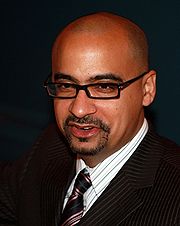
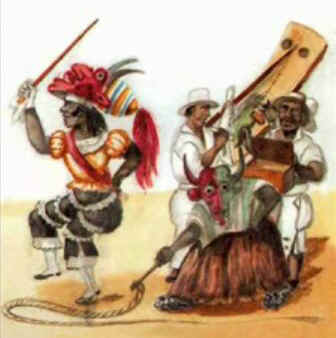 The Son de los Diablos also refers to groups of dancers, in this case, masked dancers dressed as devils who in the old days paraded through the streets on Corpus Cristi day.
The Son de los Diablos also refers to groups of dancers, in this case, masked dancers dressed as devils who in the old days paraded through the streets on Corpus Cristi day.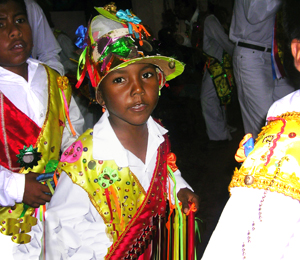 On Christmas day, the Hatajos are invited to visit private homes in the neighboring towns. There, they perform in front of an image of baby Jesus both as a group and as individuals. These performances include some spectacular demonstrations of the zapateo footwork – all done in honor of the Christ child.
On Christmas day, the Hatajos are invited to visit private homes in the neighboring towns. There, they perform in front of an image of baby Jesus both as a group and as individuals. These performances include some spectacular demonstrations of the zapateo footwork – all done in honor of the Christ child.

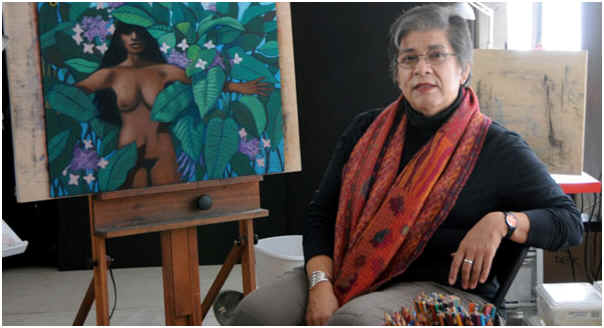
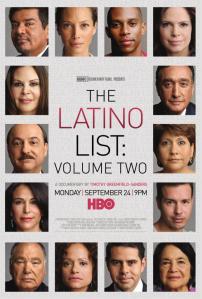

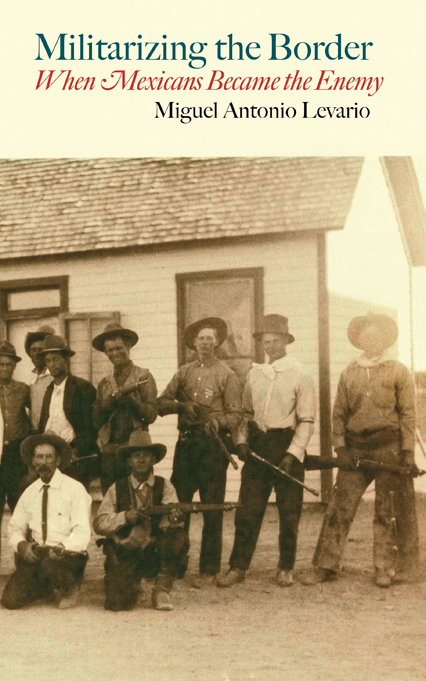
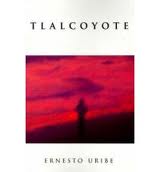


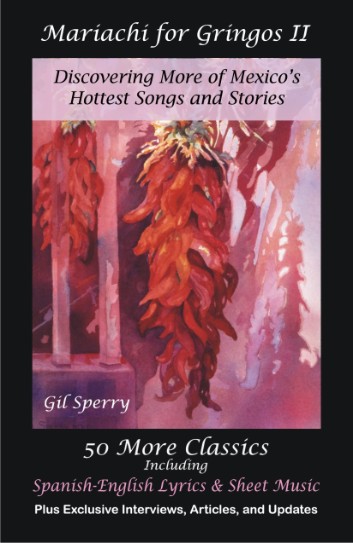
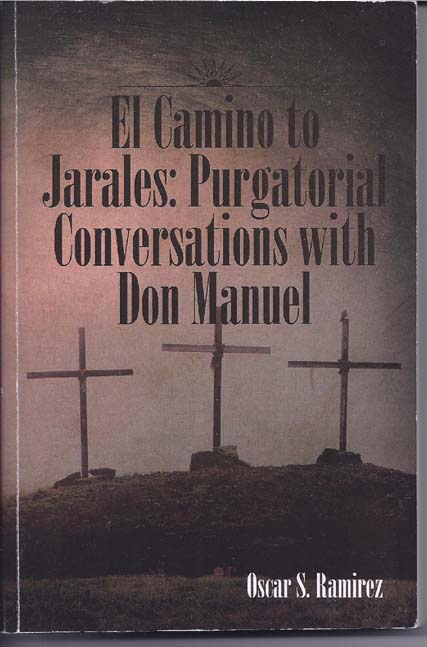

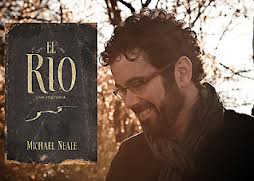
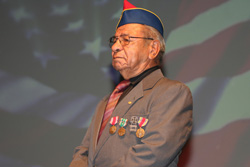 World
War II veteran Joe Belman of Lockport was honored at
Joliet Junior College (JJC) on
World
War II veteran Joe Belman of Lockport was honored at
Joliet Junior College (JJC) on






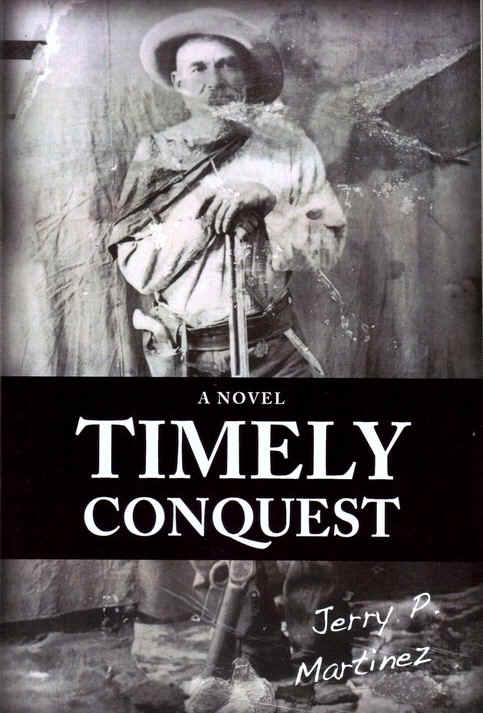

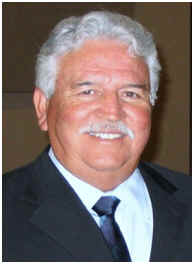 Educated in the Catholic tradition at Holy Cross a small school located in Santa Cruz, NM and continued at the Jesuit College of Santa Fe where I received a BBA and my MBA from Loyola Marymount University. I am a proud twelfth generation northern New Mexican. I believe that time should not govern my movement and I enjoy life because God would have it no other way.
Educated in the Catholic tradition at Holy Cross a small school located in Santa Cruz, NM and continued at the Jesuit College of Santa Fe where I received a BBA and my MBA from Loyola Marymount University. I am a proud twelfth generation northern New Mexican. I believe that time should not govern my movement and I enjoy life because God would have it no other way. 

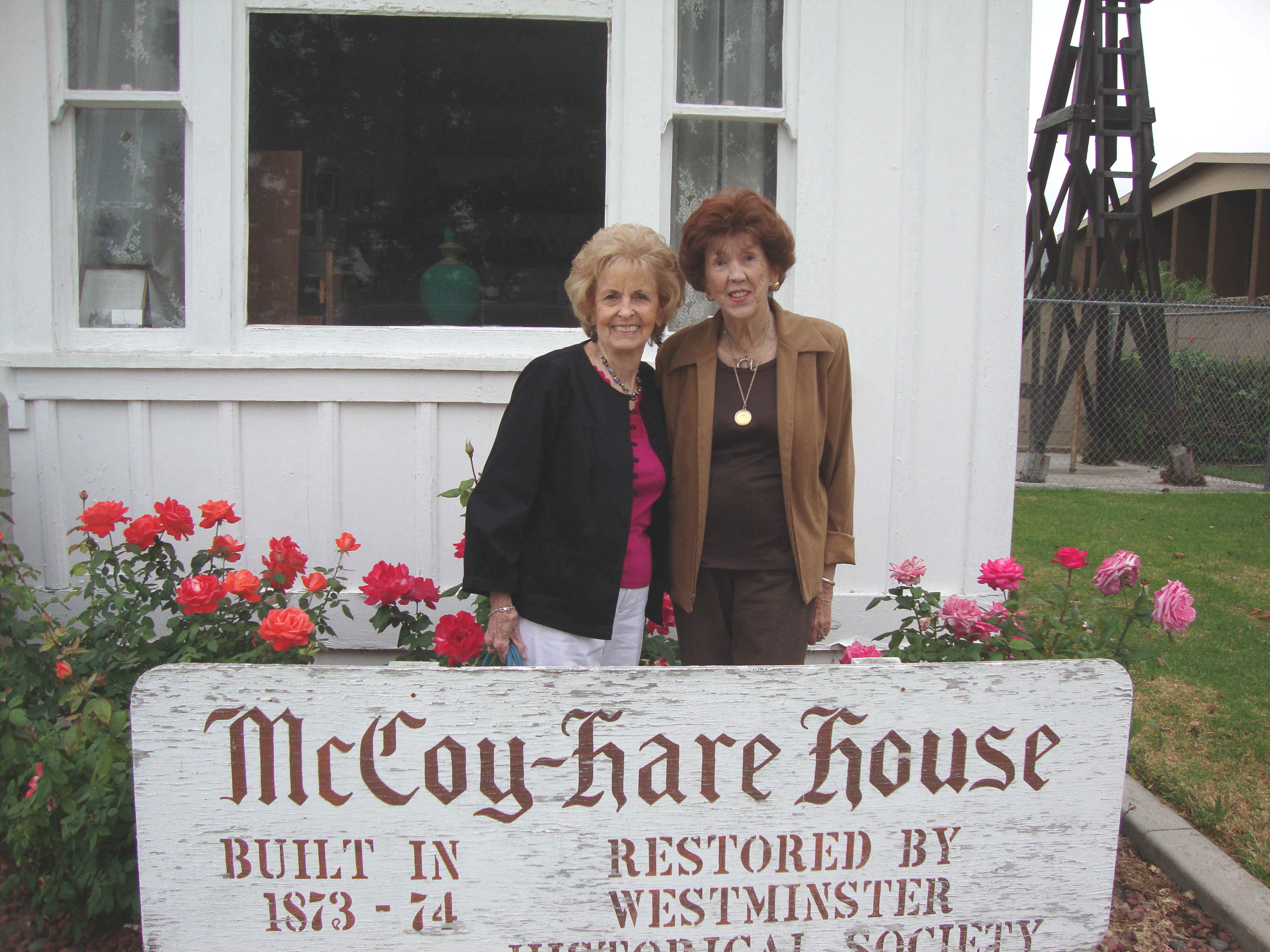
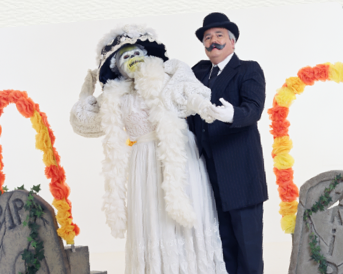
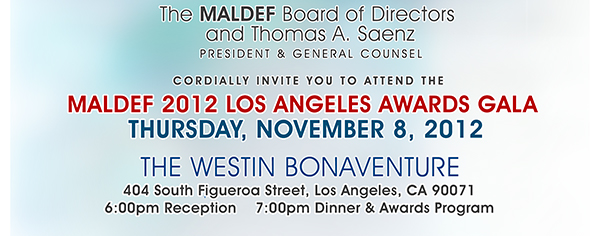


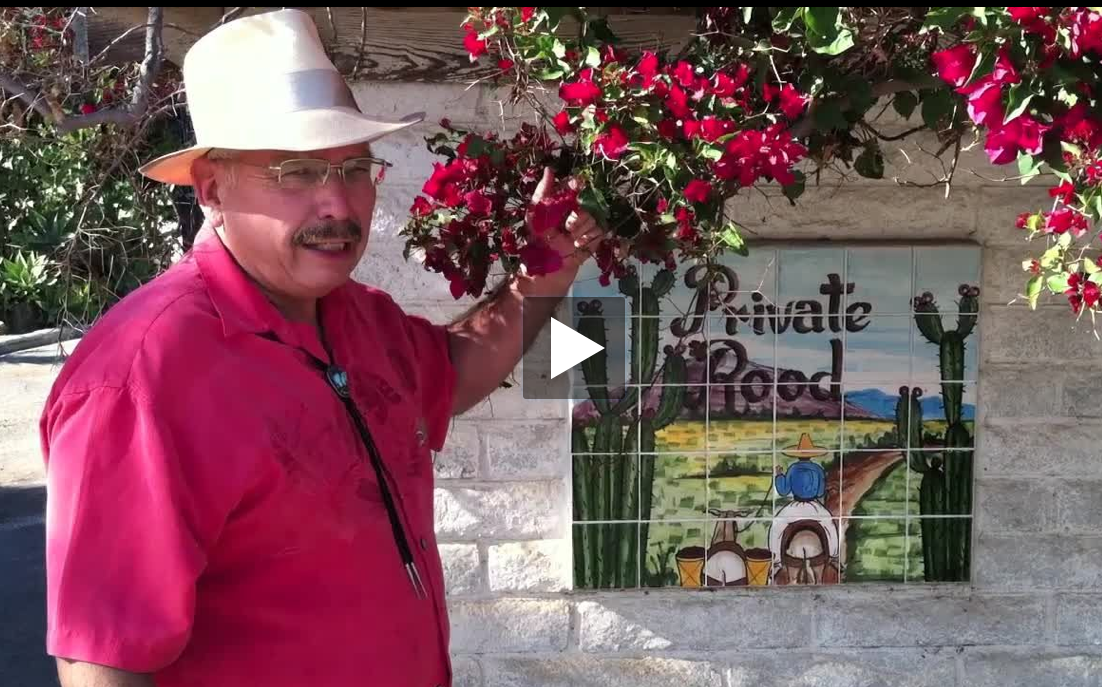

 Mateo Camarillo
Mateo Camarillo Humberto Gurmilan
Humberto Gurmilan Angel Lopez
Angel Lopez Oscar Romo
Oscar Romo Martha E. Sanchez
Martha E. Sanchez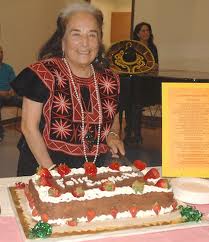 Gracia Molina
Gracia Molina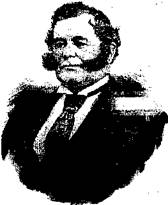


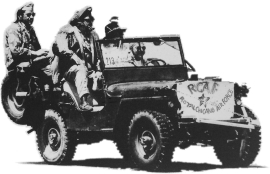
 colleges and universities
to diversify their faculties. As a result, Montoya and Villa were hired
as professors of art at California State University, Sacramento. Their
academic positions gave them the creative freedom to initiate
programmatic exchanges between the university and the barrio community.
Through this effort they initiated many programs including the Barrio
Art Program, which required university students to go out into the
community including senior centers to teach art courses.
colleges and universities
to diversify their faculties. As a result, Montoya and Villa were hired
as professors of art at California State University, Sacramento. Their
academic positions gave them the creative freedom to initiate
programmatic exchanges between the university and the barrio community.
Through this effort they initiated many programs including the Barrio
Art Program, which required university students to go out into the
community including senior centers to teach art courses.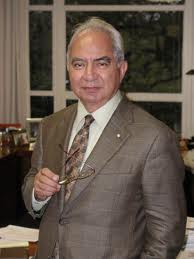
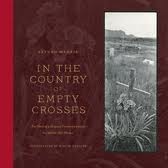
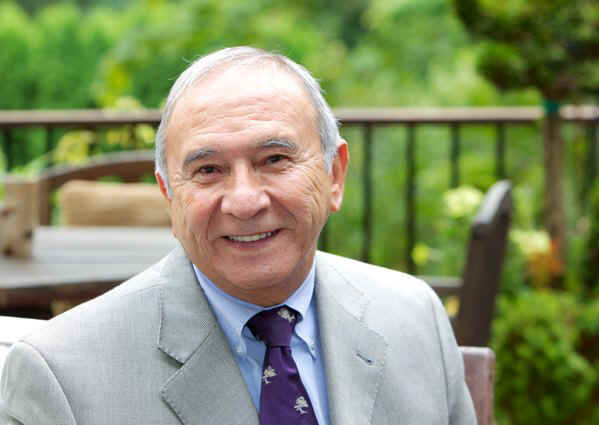


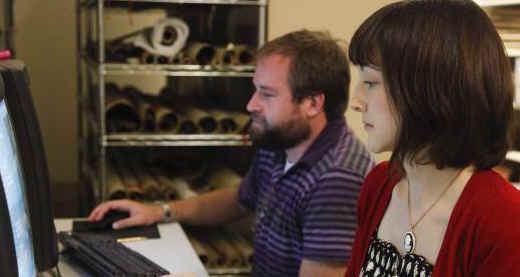
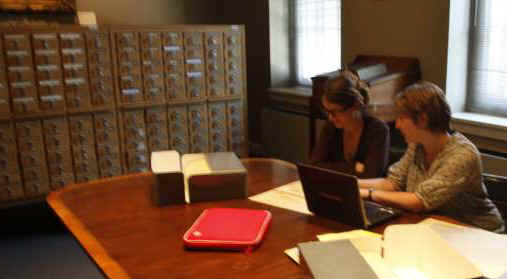
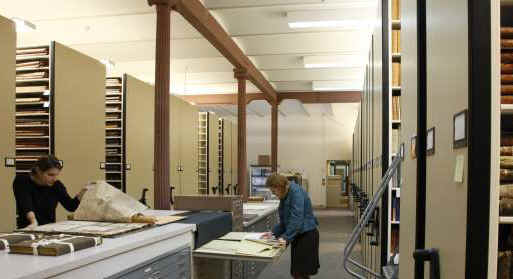
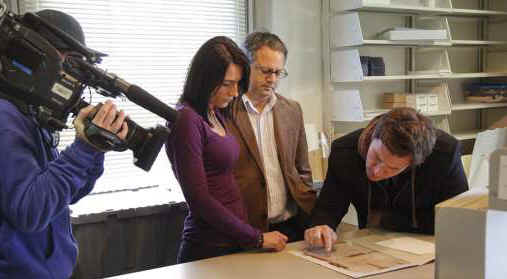
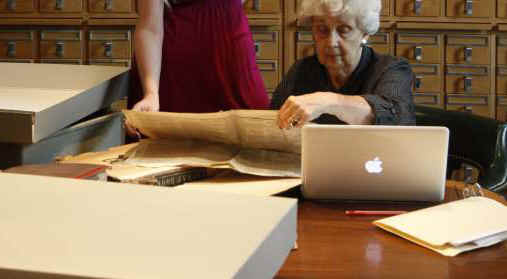

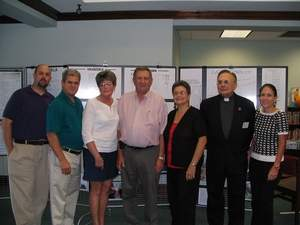
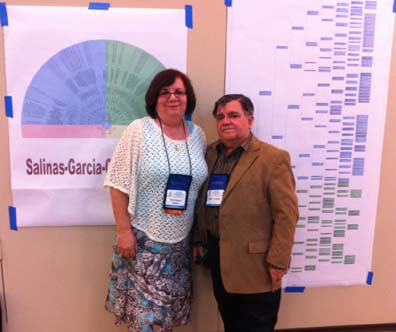
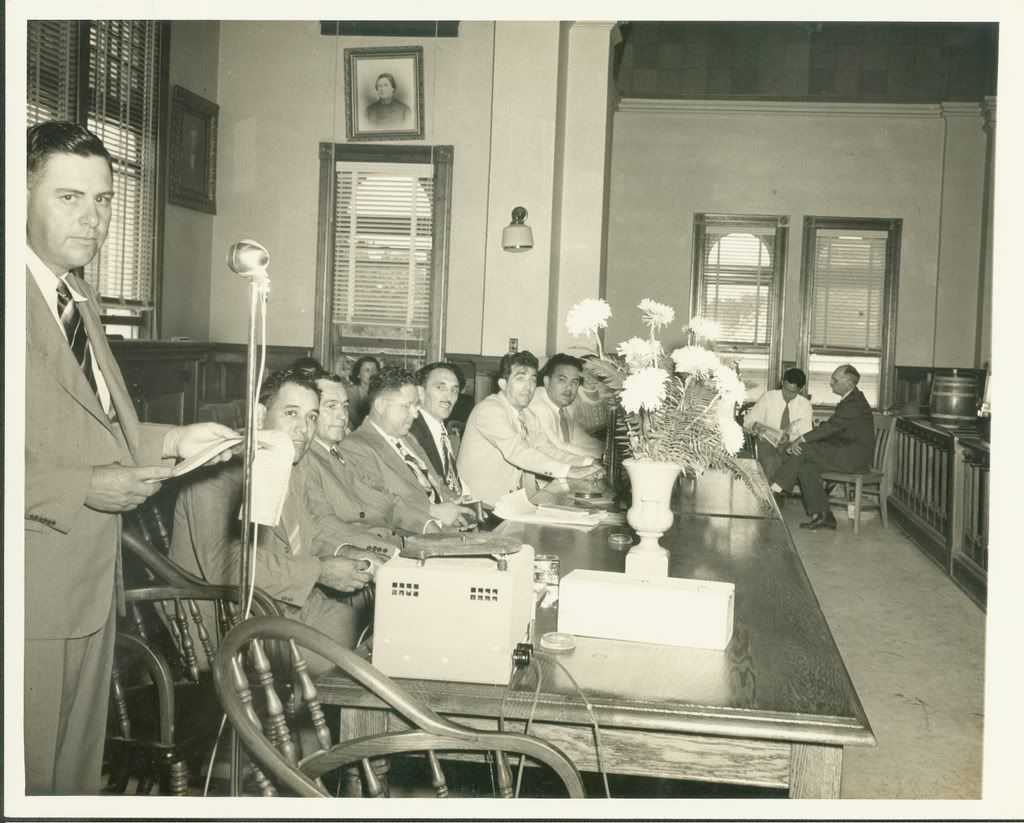

 (San
Antonio, Texas) August 31, 2012 – Texas
Tejano.com, a San Antonio-based research,
publishing, and communications firm, in
conjunction with the Alamo Legacy &
Missions Association (ALMA), a San
Antonio-based, non-profit organization that
provides living history reenactments to
educate youth and adults about Texas
history, are proud to announce today that
they will host the 7th Annual Tejano Vigil
inside the Alamo shrine on Saturday, Sept.
8, 2012 beginning at 7:00pm. We invite you,
your family and your friends to join us as
we commemorate the role Tejanos and Tejanas
played in the “Battle of The Alamo”.
Seating is limited, to RSVP and reserve your
place in this solemn ceremony, please call
(210) 673-3584.
(San
Antonio, Texas) August 31, 2012 – Texas
Tejano.com, a San Antonio-based research,
publishing, and communications firm, in
conjunction with the Alamo Legacy &
Missions Association (ALMA), a San
Antonio-based, non-profit organization that
provides living history reenactments to
educate youth and adults about Texas
history, are proud to announce today that
they will host the 7th Annual Tejano Vigil
inside the Alamo shrine on Saturday, Sept.
8, 2012 beginning at 7:00pm. We invite you,
your family and your friends to join us as
we commemorate the role Tejanos and Tejanas
played in the “Battle of The Alamo”.
Seating is limited, to RSVP and reserve your
place in this solemn ceremony, please call
(210) 673-3584.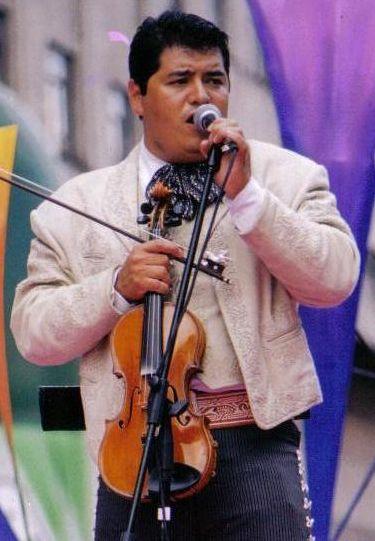 For many of those who have been intimately connected with this
worthy event, the sight of nearly 300 local students pouring
into the lobby of the Rosarito Beach Hotel to register on
Wednesday morning, October 3rd, was particularly gratifying.
They were there, thanks to the altruism of both the Mexican
nationals and expatriates who had signed on to become Padrinos
de los Talleres (Patrons of the Workshops), to be tutored in
the fine points of the instrumental and vocal music &
dance of their country by some of the finest teachers of these
skills in the world. This was the centerpiece of the Festival
because the sponsoring entity, the Club de Ninos y Ninas
Seccion Rosarito (The Boys and Girls Club of Rosarito) knows
that the public schools of Mexico only provide ballet folklórico
programs, not instruments and musical instructors.
For many of those who have been intimately connected with this
worthy event, the sight of nearly 300 local students pouring
into the lobby of the Rosarito Beach Hotel to register on
Wednesday morning, October 3rd, was particularly gratifying.
They were there, thanks to the altruism of both the Mexican
nationals and expatriates who had signed on to become Padrinos
de los Talleres (Patrons of the Workshops), to be tutored in
the fine points of the instrumental and vocal music &
dance of their country by some of the finest teachers of these
skills in the world. This was the centerpiece of the Festival
because the sponsoring entity, the Club de Ninos y Ninas
Seccion Rosarito (The Boys and Girls Club of Rosarito) knows
that the public schools of Mexico only provide ballet folklórico
programs, not instruments and musical instructors.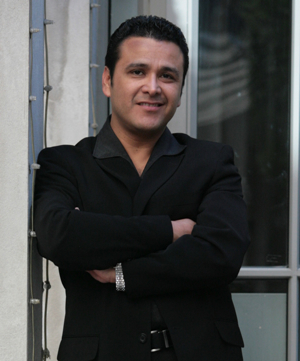 Saturday and Sunday, October 6th and 7th, found two days of
non-stop entertainment being provided for those in attendance.
The Competencias, where each country's hand-picked mariachi
groups & folklórico troupes competed for over $10,000 in
prize money, filled the morning and afternoon hours. From noon
to 1:00 PM each day, The People's Choice Sing-Off, featuring
vocal performers, was the focus of the crowd's attention. Both
days festivities book-ended the Saturday evening's Concierto
Extravaganza which featured the Grammy Award-winning Mariachi
Divas, as well as other great performances by Mariachi Tesoro
de Tucson, Genesis Codina, Selah Flores, Caroline Crawford,
Mariachi Estrellas de Chula Vista, Juan Pablo Pacheco, Olga
Flores and Friends, Mariachi Aguila de Tijuana and Ballet
Folklórico Tapatio.
Saturday and Sunday, October 6th and 7th, found two days of
non-stop entertainment being provided for those in attendance.
The Competencias, where each country's hand-picked mariachi
groups & folklórico troupes competed for over $10,000 in
prize money, filled the morning and afternoon hours. From noon
to 1:00 PM each day, The People's Choice Sing-Off, featuring
vocal performers, was the focus of the crowd's attention. Both
days festivities book-ended the Saturday evening's Concierto
Extravaganza which featured the Grammy Award-winning Mariachi
Divas, as well as other great performances by Mariachi Tesoro
de Tucson, Genesis Codina, Selah Flores, Caroline Crawford,
Mariachi Estrellas de Chula Vista, Juan Pablo Pacheco, Olga
Flores and Friends, Mariachi Aguila de Tijuana and Ballet
Folklórico Tapatio.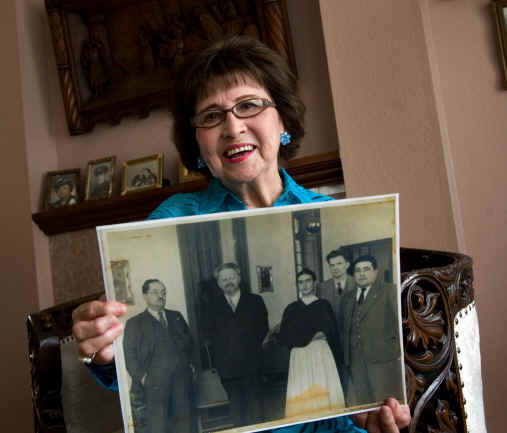 A historic
photo of
A historic
photo of 






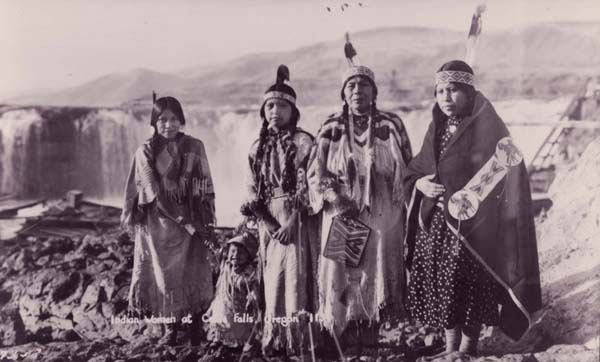

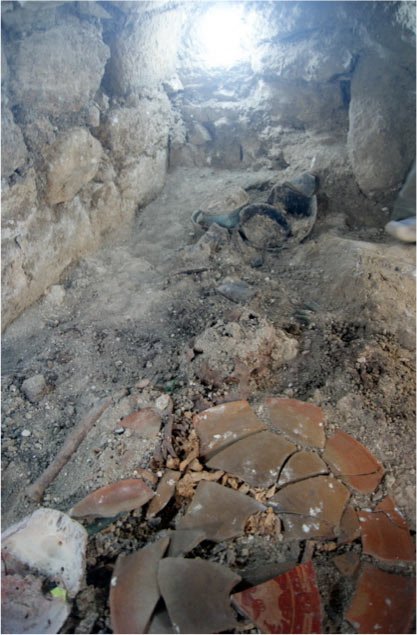
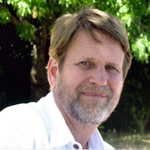 Archaeologists
in Guatemala have discovered the tomb of Lady K’abel, a
seventh-century Maya Holy Snake Lord considered one of the great queens
of Classic Maya civilization. The tomb was discovered during
excavations of the royal Maya city of El Perú-Waka’ in northwestern
Petén, Guatemala, by a team of archaeologists led by Washington
University in St. Louis’ David Freidel, co-director of the expedition.
Archaeologists
in Guatemala have discovered the tomb of Lady K’abel, a
seventh-century Maya Holy Snake Lord considered one of the great queens
of Classic Maya civilization. The tomb was discovered during
excavations of the royal Maya city of El Perú-Waka’ in northwestern
Petén, Guatemala, by a team of archaeologists led by Washington
University in St. Louis’ David Freidel, co-director of the expedition.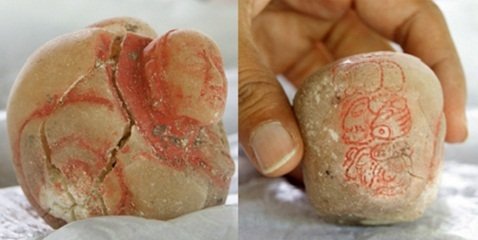
 “The
precise nature of the text and image information on the white stone jar
and its tomb context constitute a remarkable and rare conjunction of
these two kinds of records in the Maya area.”
“The
precise nature of the text and image information on the white stone jar
and its tomb context constitute a remarkable and rare conjunction of
these two kinds of records in the Maya area.”
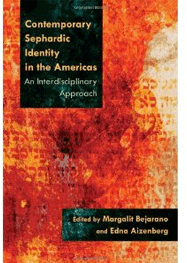

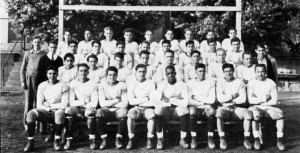 Kenny Washington and the 1935 LIncoln Tigers: undefeated City Champions.
A late-blooming football star reaches the pinnacle of success. As a lanky student at Lincoln High, Kenny was once considered too weak to play football, so he concentrated on baseball. By his junior year in 1934, Kenny had blossomed into a star football player who became an
unstoppable force during his last two years of high school. During his senior year in 1935 Kenny led the Lincoln High football team to an undefeated season in which they won the L.A. City Championship. Kenny also won the City batting title while playing for the baseball team and also led his beloved Tigers to the City Championship. For two seasons Kenny was named to the All City teams in both football and baseball. Later on as a member of the L.A. Rams, a football card described Kenny as being, “Considered by many as the greatest high school player in Southern California history.”
Kenny Washington and the 1935 LIncoln Tigers: undefeated City Champions.
A late-blooming football star reaches the pinnacle of success. As a lanky student at Lincoln High, Kenny was once considered too weak to play football, so he concentrated on baseball. By his junior year in 1934, Kenny had blossomed into a star football player who became an
unstoppable force during his last two years of high school. During his senior year in 1935 Kenny led the Lincoln High football team to an undefeated season in which they won the L.A. City Championship. Kenny also won the City batting title while playing for the baseball team and also led his beloved Tigers to the City Championship. For two seasons Kenny was named to the All City teams in both football and baseball. Later on as a member of the L.A. Rams, a football card described Kenny as being, “Considered by many as the greatest high school player in Southern California history.” 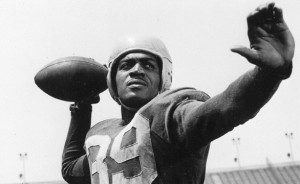 One of the greatest UCLA Bruins of all time.
Kenny earned a scholarship to UCLA as most other private universities would not enroll African-Americans at that time due to the racial barriers imposed by segregation. While at UCLA, Kenny played football alongside Jackie Robinson who would later on become the first African-American to play major league baseball for the then Brooklyn Dodgers. During his senior year at UCLA Kenny led the nation in both rushing and passing yards with a total of 3,206 yards gained. His astounding performance while playing both offense and defense led to his being selected to the All-American Football Team. He was recognized as the top football player in the country and was honored by being given the 1939 Douglas Fairbanks Jr. Award. Kenny was also the first African-American to play baseball at UCLA and batted .454 in 1937. Kenny then played in the 1940 College All-Star Game where the best college players squared off against the
N.F.L. Champion Green Bay Packers who he scored a touchdown against. He was also
An All-American at UCLA and a star with the L.A. Rams. subsequently inducted into the College Football Hall of fame in 1956 and was the first UCLA player to ever win this honor.
One of the greatest UCLA Bruins of all time.
Kenny earned a scholarship to UCLA as most other private universities would not enroll African-Americans at that time due to the racial barriers imposed by segregation. While at UCLA, Kenny played football alongside Jackie Robinson who would later on become the first African-American to play major league baseball for the then Brooklyn Dodgers. During his senior year at UCLA Kenny led the nation in both rushing and passing yards with a total of 3,206 yards gained. His astounding performance while playing both offense and defense led to his being selected to the All-American Football Team. He was recognized as the top football player in the country and was honored by being given the 1939 Douglas Fairbanks Jr. Award. Kenny was also the first African-American to play baseball at UCLA and batted .454 in 1937. Kenny then played in the 1940 College All-Star Game where the best college players squared off against the
N.F.L. Champion Green Bay Packers who he scored a touchdown against. He was also
An All-American at UCLA and a star with the L.A. Rams. subsequently inducted into the College Football Hall of fame in 1956 and was the first UCLA player to ever win this honor.
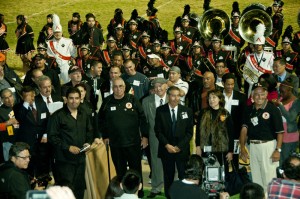 Kenny
Washington's family, alumni and students honor his legacy at a recent
Tigers football game.
Kenny
Washington's family, alumni and students honor his legacy at a recent
Tigers football game.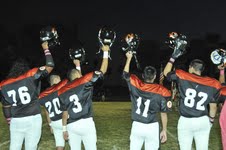 Current Lincoln Tigers football team cheering the memory and example of Kenny.
Current Lincoln Tigers football team cheering the memory and example of Kenny. 

